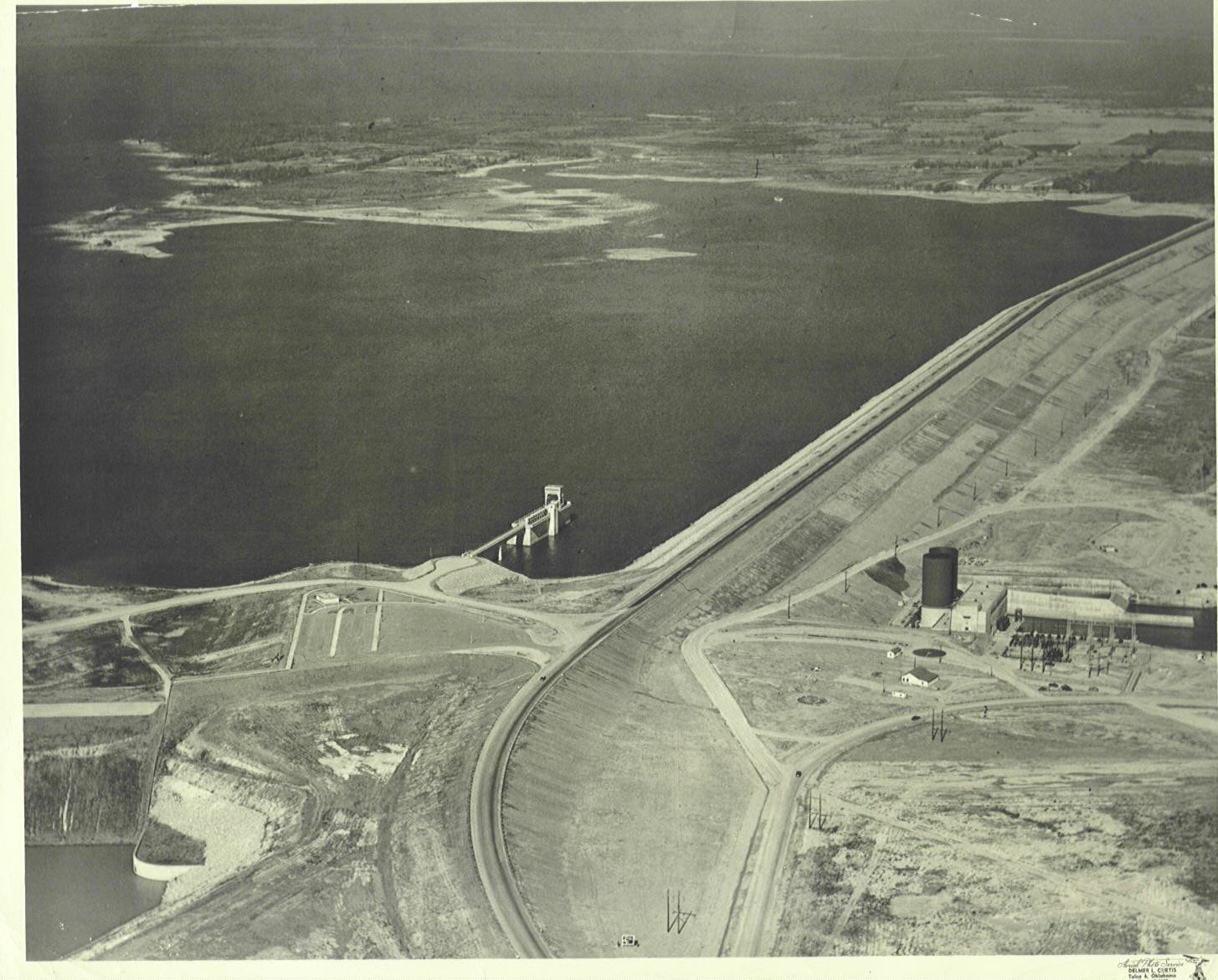 Lake Texoma has grown in importance over the decades from primarily relief from annual flooding and destruction to an employment engine for the area, and finally a recreation mecca for the nation.
Lake Texoma has grown in importance over the decades from primarily relief from annual flooding and destruction to an employment engine for the area, and finally a recreation mecca for the nation.
Mr. George Moulton who some consider the father of the Denison Dam was a Denison businessman who dreamed of placing a dam on the Red River at Baer’s Ferry as early as 1925. He began lobbying and talking to Chambers of Commerce in Denison and Durant in the late 1920’s. Sam Rayburn joined the dream team in the early 1930s and was instrumental in the legislative process of making the great lake a reality.
The Flood Control Act of 1938 (Public Law No. 761, 75th Congress, 3rd Session) authorized funding for the Denison dam, and the U.S. Army Corps of Engineers set up the Denison District Office in June of that year. The first Commander was Captain Lucius D. Clay.
Lake Texoma was constructed during WWII. German prisoners of war were involved in the construction of the dam and were the first POWs to be used in a labor camp. These prisoners were from Rommel’s Afrika Korps and were housed in camps at Tishomingo and Powell, Oklahoma. Later, the Tishomingo POWs were housed in another camp at the spillway. Only non-war related work could be performed by POWs according to the Geneva Convention – such as clearing trees for the proposed lake and light construction. Construction projects performed by the prisoners included mortared stone lining of the drainage ditches around the damsite, which are still present today, and a bathroom facility at the damsite.
Construction of the dam was completed in January 1944 at a cost of $54 million. The installation of the two generators was completed in September 1949. Initially Lake Texoma was authorized for flood control, hydropower and water supply. Recreation was not officially added as a project purpose by Congress until 1988.
The management of the lands around Lake Texoma was turned over to the National Park Service in 1946 and they continued until 1949 when both agencies decided that the NPS would move out and the U.S. Army Corps of Engineers would take over the operations and maintenance responsibilities. The National Park Service was always a reluctant partner in this arrangement and finally removed themselves from Texoma in 1949.
Lake Texoma has crested the spillway (640’ elevation) a total of five times: 1957, 1990, 2007 and twice in 2015.
The following Reports of Investigations are historical information presented in support of the interpretive panels of the Denison Dam Wayside Exhibits located at the Overlook Area. Both are public documents that may be freely shared.
Denison Dam and Lake Texoma: From Prehistory to the 1950s (5.27 MB)
Present-day Denison Dam and Lake Texoma are located within an area that has a long history of inhabitation dating back many thousands of years. The dam had huge impacts on the region’s history and development, and its design revolutionized how dams of its type were built. As the world’s first rolled earthfill dam, the Corps’ innovative engineers pioneered a new construction technique that became the standard for earthfill dams from that point forward. This 49-page document examines the area of Lake Texoma from prehistory through the construction of the dam into the 1950s.
Lake Texoma Recreation during the Jim Crow Era (6.35 MB)
The completion of the Denison Dam and Lake Texoma brought outdoor and water recreation to the area during the era of Jim Crow segregation, when there were separate public facilities for white and Black visitors. The Overlook Restroom, built in 1949 and demolished in 2018, was the last remaining physical evidence of segregation at Lake Texoma. Its demolition required compliance with the National Historic Preservation Act, concluding that the restroom was historically significant. This 195-page document examines the effects of Jim Crow era legislation on the development of recreational facilities for Blacks at Lake Texoma and serves as mitigation for the loss of the historic restroom.